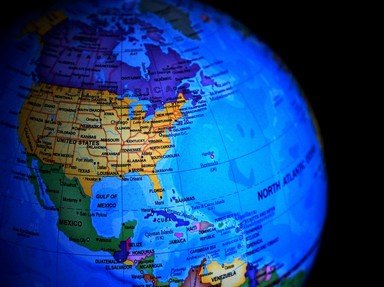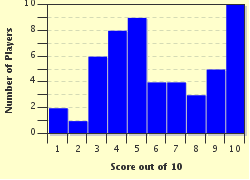Quiz Answer Key and Fun Facts
1. Sharing its name with an island in the West Indies, what World Heritage Site of Guatemala is renowned for its colonial churches, Spanish Baroque architecture, and for being the third capital of the Kingdom of Guatemala?
2. Designated as a World Heritage Site in 1996, what nation's barrier reef system is the largest in the northern hemisphere and is a haven for manatees and sea turtles?
3. Although it is located 550 kilometers (342 miles) from the mainland, this island is considered part of the province of Puntarenas in Costa Rica. What is the name of this island that was declared a World Heritage Site in 1997 due to its unique mix of endemic species?
4. Within the Colón Province of Panama there are Spanish structures on the Caribbean coast that were designated as a World Heritage Site in 1980. What were these structures, that were designed to protect the Isthmus of Panama?
5. Located 303 kilometers (188 miles) from Guatemala City, which World Heritage Site located within a rainforest features Mayan ruins including a temple reaching 47 meters (154 feet) high?
6. Located along Honduras' Mosquito Coast, which biosphere reserve became a World Heritage Site in 1982 and has a popular tropical fruit in its name?
7. Also in Honduras is an area of Mayan architecture located near the border with Guatemala that was designated as a World Heritage Site in 1980. What is this area, famous for its stelae monuments and Altar Q?
8. The first World Heritage Site in El Salvador was established in 1993 and it is a true jewel. What is the name of this pre-Columbian Mayan farming village that has been called the "Pompeii of the Americas" after it was discovered under volcanic ash in 1976?
9. Sharing part of its name with the second largest city in Nicaragua, which locale achieved the status of a World Heritage Site in 2000? It was honored in recognition of its being the only 16th century colonial city in the Americas that never had any city planning alterations in its history.
10. The largest island in Central America is Coiba Island which was declared a World Heritage Site in 2005. Which of the following statements is true regarding Coiba?
Source: Author
Triviaballer
This quiz was reviewed by FunTrivia editor
stedman before going online.
Any errors found in FunTrivia content are routinely corrected through our feedback system.

